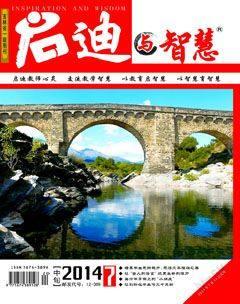牛津小学英语4A Unit 3 A purse教学设计
黄巧英
【课题】
4A Unit 3 A purse
【教材简介】
本单元的日常交际用语是“确认所属”,与该项目相结合的内容是形容词性物主代词。
本单元的另一个交际项目是“空间关系”,即人或物所处的位置,教师要创设一个合乎逻辑的语境,让学生掌握空间关系的表达法。
【教学过程】
Step1. Warm up
1.Listen to the song: Where is Helen?
歌词为“Where is Helen?Shes in the classroom. Where is David? Hes in the park.”
2.T:Shall we sing it now?(上课铃响后立刻带领学生齐唱歌曲。)
3.提问并复现单词classroom,并导入开始上课。
T: WheresHelen?S: Shes in the classroom.
T: Where are we, now?S: …
T: Yes, were in the classroom. Were having an English lesson now. Shall we begin our class?
设计步骤说明:该步骤是准备阶段,先用一首歌曲来调动学生的积极性,紧接着利用歌曲中的对唱复现单词classroom,为下面课文的新授作了铺垫。
Step2.Free talk.
1. T:Whats on your desk/chair?S:(教师引导帮助学生回答)Its a/an ... .
T:(继续与学生交流)Can I have a look?
S:Sure. Here you are.
T:Thank you.
S:(教师启发学生回答)Not at all.
[TEACH: Not at all.]
T:Let me see. What a nice …!
[TEACH: Let me see.]
(对话进行数个来回,帮学生在真实情景中学会使用文中出现的新的交际用语。)
2.T:(将上面与学生对话时拿来的一些物品通过请其他同学帮忙交还给本人)Come here, XX,your ...?
S: Yes,it is./No,it isnt .
T: Here you are./OK, this … is for XXX.(come here應注意与体态语言的配合)
[复现: Come here.]
3.三人小组操练以上句型。
设计步骤说明:在自由对话这个环节中,将本节课较为松散的交际用语重新整合了一段对话,主要的目的是利用英语学习的交际性来激发他们的兴趣,激活他们的思维,同时对前面所学习知识进行适当的复习,也为下面的新授做一个铺垫。
Step 3. Presentation and practice.
1.学新单词 a purse:
T:Look, whats that over there?(利用课件呈现一个钱包,在此处也初步涉及到词组over ther,让学生进行感官的熟悉和初步的理解)
S:(师启发回答)Its a purse.[TEACH: a purse与nurse发音对比 并揭示课题]
2.重点突破交际用语:A:Is that your……?
B:Yes, it is./No, it isnt. Perhaps its…
A:Wheres…?
B:Perhaps hes/shes in ….
T:Is that your purse?
S:(师启发回答)No, it isnt.
T:(询问数个学生后)Thats not your purse, I think. Lets go and find the owner, OK? Shall we ask Miss Li, first?
(教师板书句型,引导学生用Is that your purse?提问,practice in chains)
T:(让学生齐问课件中的Miss Li)
You did a good job. That purse isnt yours, is it Miss Lis? Lets ask her together,OK?
S:Is that your purse?
Miss Li(利用课件进行人机对话):No, it isnt. Per-
haps its Davids.(利用课间呈现Perhaps的中文,并利用旧单词ruler,cat对perhaps进行读音的迁移,带读并出示含义)
T:OK! Lets go to ask David! Wheres David?(课件中发出“刷牙”的声音)
S:(鼓励学生用perhaps) Perhaps hes in the bath-
room.
T:(课件)Yes! Lets ask him together.
Ss: Hello, David. Is that your purse?
David(利用课件进行人机对话): No,it isnt .
T:Whose purse is it ?(思考状)
S:(鼓励学生用perhaps 来猜测)Perhaps its...s .
David(利用David的回答来揭示答案):No,it isnt .Perhaps its Gao Shans .
Ss:Hello, Gao Shan. Is that your purse?
Gao Shan:Let me see. Yes, it is .Thank you.
Ss:Not at all.
3.导入课文:
T:Congratulations! You find the owner!(利用课件呈现David和它的钱包)Whose purse is it?
S:Its Gao Shans.
T:Look! Heres another pink purse. Is this Gao Shans purse, too?(课件呈现课文中的粉红色钱包)
T:Lets watch the cartoon, than youll get the answer.(课件播放A部分的卡通)
T:(让学生默读课文,找出文中不理解的词句)Read silently the text then try to find the word you cant understand,underline the words. [TEACH: over there]
4. 操练课文对话内容:
T: Wonderful! This time, according to their conversation, can you put these pictures into the right order?(多媒体呈现四幅被打乱的课文图片)
S: ( Put the pictures into the correct order.)
设计步骤说明:课文的导入仍与上个步骤一脉相承,通过高山的钱包过渡到无人认领的粉红色的钱包,通过让学生先去观看课文动画,感知他们,培养学生主动学习的能力。
Step 4.Consolidation.
1.Practice in pairs.(创设一个Lost property office 的情景)
2.Task.
利用课件呈现交际的任务“Helen 和朋友们在上学的路上捡到了一件绿色的sweater,会是谁的呢?”
S: Work in groups将故事续编下去。
设计步骤说明:教师先和学生做一个model,再让学生来练习,这样照顾到了大多数学生,尤其是有困难的学生。

